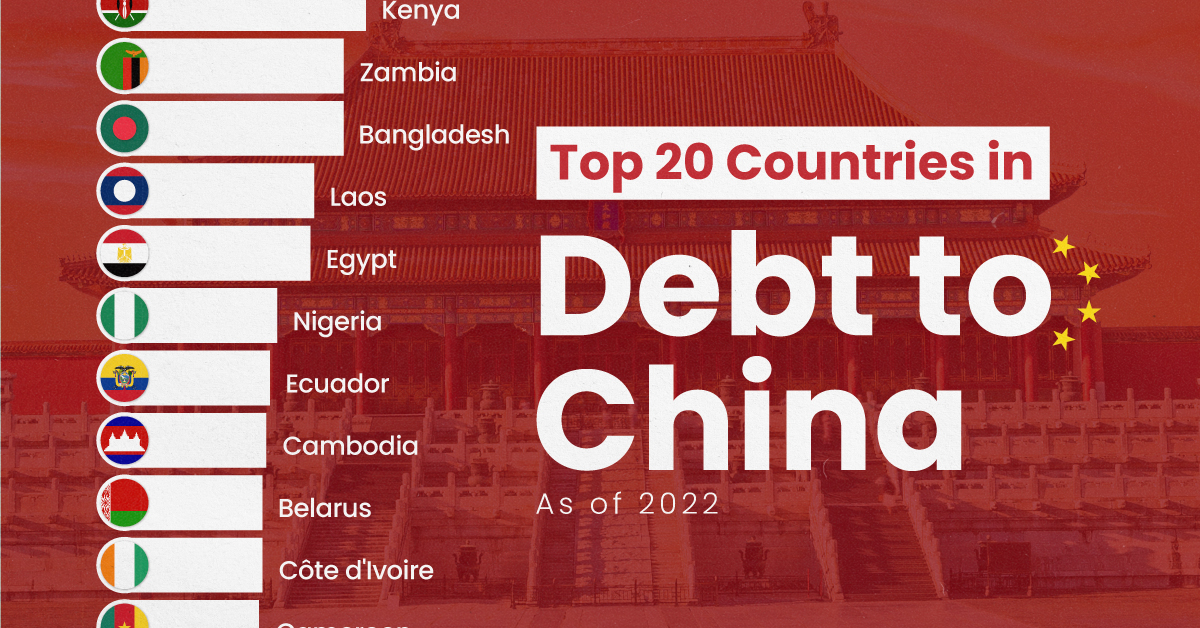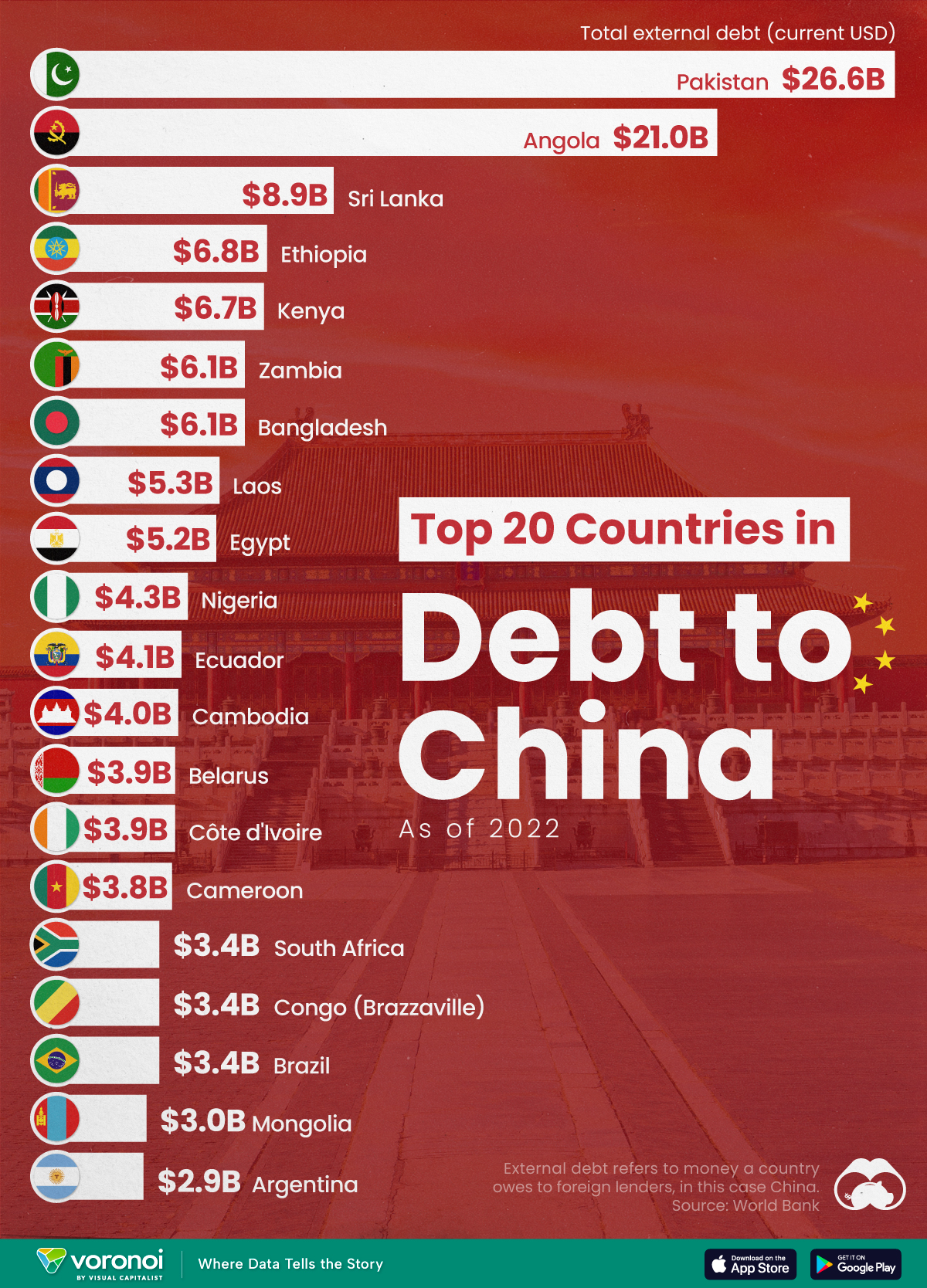Money
Why Gen Z is Approaching Money Differently Than Other Generations
Every generation has their own unique approach to money and personal finance.
Millennials, for example, found the journey to adulthood riddled with obstacles such as stagnating wage growth and uncertain economic conditions. These challenges, combined with other generational circumstances, helped to shape the group’s spending habits and attitudes towards money and debt.
Along this journey, Millennials ended up making their fair share of financial mistakes – but interestingly, evidence is now mounting that the next generational cohort (Gen Z) is already learning from their elders.
A New Approach to Money
Today’s infographic comes to us from Rave Reviews and it shows how Gen Z is taking a more pragmatic approach to money.

Gen Z saw some of their older friends take on massive amounts of debt, while also struggling to find well-paying jobs.
As a result, this new generation (born 1997 and onwards) is taking a much more pragmatic approach to the world of personal finance. Gen Zers generally want to secure well-paying and stable jobs, and to grow their savings rather than spending money that they don’t have.
School and Work
For Generation Z, an education is often seen as an end to a financial means. In other words, college is an opportunity to build a set of skills that will be valuable to employers, ensuring a stable career.
That’s why 88% of the first Gen Z grad class in 2017 ended up choosing their majors with job availability in mind.
Recent Gen Z grads are willing to put in the work, as well:
- 75% are willing to relocate to another state for a job offer
- 58% are willing to work evenings and weekends
- 78% have completed an internship or apprenticeship
- 77% earn extra money through freelance work, a part-time job, or an earned allowance
- 35% already own their own business, or are planning to start one in the future
While the Gen Z outlook on school and work is a defining factor in their attitude towards personal finance, how they save and spend money is also making a difference.
Saving and Spending
A whopping 89% of Gen Zers say planning for their financial future makes them feel empowered, while 64% have already begun researching the topic of financial planning.
With dollars and cents on their minds, Gen Z is a more frugal and fiscally responsible group:
- 72% say that cost is most important factor when making a purchase
- 47% use their phones in-store to check prices and ask family or friends for advice
- 66% plan to attend college in-state to save on tuition
As Gen Z enters the professional workforce and starts investing their savings, it will be interesting to see what comes out of this frugal and practical approach to money.
Economy
Ranked: The Top 20 Countries in Debt to China
The 20 nations featured in this graphic each owe billions in debt to China, posing concerns for their economic future.

Ranked: The Top 20 Countries in Debt to China
This was originally posted on our Voronoi app. Download the app for free on iOS or Android and discover incredible data-driven charts from a variety of trusted sources.
In this graphic, we ranked the top 20 countries by their amount of debt to China. These figures are as of 2022, and come from the World Bank (accessed via Yahoo Finance).
The data used to make this graphic can be found in the table below.
| Country | Total external debt to China ($B) |
|---|---|
| 🇵🇰 Pakistan | $26.6 |
| 🇦🇴 Angola | $21.0 |
| 🇱🇰 Sri Lanka | $8.9 |
| 🇪🇹 Ethiopia | $6.8 |
| 🇰🇪 Kenya | $6.7 |
| 🇧🇩 Bangladesh | $6.1 |
| 🇿🇲 Zambia | $6.1 |
| 🇱🇦 Laos | $5.3 |
| 🇪🇬 Egypt | $5.2 |
| 🇳🇬 Nigeria | $4.3 |
| 🇪🇨 Ecuador | $4.1 |
| 🇰🇭 Cambodia | $4.0 |
| 🇨🇮 Côte d'Ivoire | $3.9 |
| 🇧🇾 Belarus | $3.9 |
| 🇨🇲 Cameroon | $3.8 |
| 🇧🇷 Brazil | $3.4 |
| 🇨🇬 Republic of the Congo | $3.4 |
| 🇿🇦 South Africa | $3.4 |
| 🇲🇳 Mongolia | $3.0 |
| 🇦🇷 Argentina | $2.9 |
This dataset highlights Pakistan and Angola as having the largest debts to China by a wide margin. Both countries have taken billions in loans from China for various infrastructure and energy projects.
Critically, both countries have also struggled to manage their debt burdens. In February 2024, China extended the maturity of a $2 billion loan to Pakistan.
Soon after in March 2024, Angola negotiated a lower monthly debt payment with its biggest Chinese creditor, China Development Bank (CDB).
Could China be in Trouble?
China has provided developing countries with over $1 trillion in committed funding through its Belt and Road Initiative (BRI), a massive economic development project aimed at enhancing trade between China and countries across Asia, Africa, and Europe.
Many believe that this lending spree could be an issue in the near future.
According to a 2023 report by AidData, 80% of these loans involve countries in financial distress, raising concerns about whether participating nations will ever be able to repay their debts.
While China claims the BRI is a driver of global development, critics in the West have long warned that the BRI employs debt-trap diplomacy, a tactic where one country uses loans to gain influence over another.
Learn More About Debt from Visual Capitalist
If you enjoyed this post, check out our breakdown of $97 trillion in global government debt.
-

 Demographics7 days ago
Demographics7 days agoThe Countries That Have Become Sadder Since 2010
-

 Green2 weeks ago
Green2 weeks agoRanked: The Countries With the Most Air Pollution in 2023
-

 Green2 weeks ago
Green2 weeks agoRanking the Top 15 Countries by Carbon Tax Revenue
-

 Markets2 weeks ago
Markets2 weeks agoU.S. Debt Interest Payments Reach $1 Trillion
-

 Mining2 weeks ago
Mining2 weeks agoGold vs. S&P 500: Which Has Grown More Over Five Years?
-

 Energy2 weeks ago
Energy2 weeks agoThe World’s Biggest Nuclear Energy Producers
-

 Misc2 weeks ago
Misc2 weeks agoHow Hard Is It to Get Into an Ivy League School?
-

 Debt2 weeks ago
Debt2 weeks agoHow Debt-to-GDP Ratios Have Changed Since 2000












